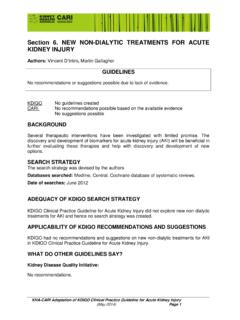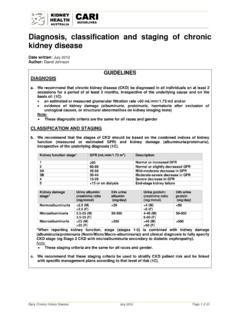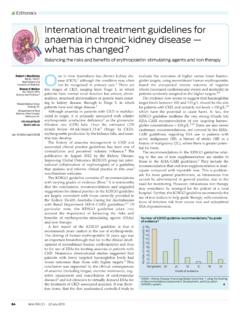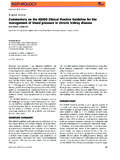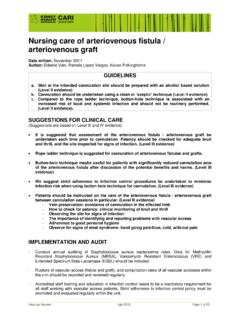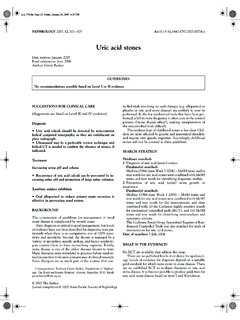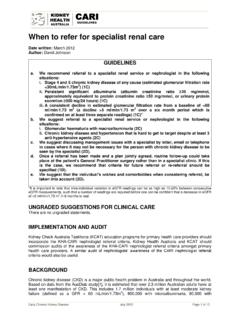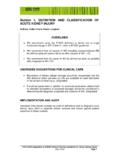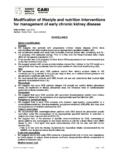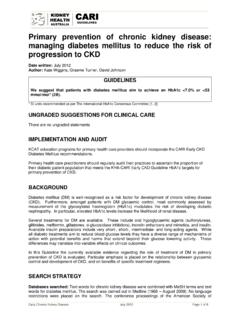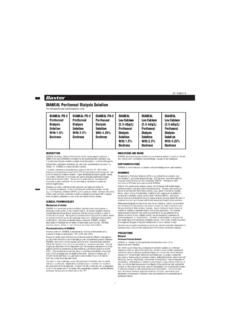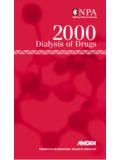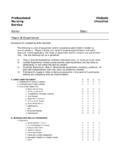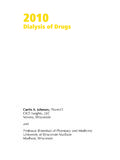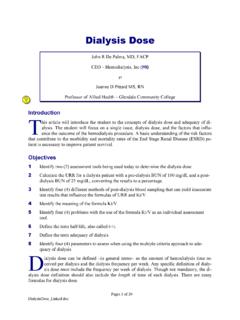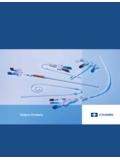Transcription of Dialysis Adequacy (HD) Guidelines - KHA-CARI …
1 The CARI Guidelines Caring for Australians with Renal Impairment Dialysis Adequacy Haemodialysis (June 2005) Dialysis Adequacy (HD) Guidelines Peter Kerr, Convenor (Monash, Victoria) Vlado Perkovic (Camperdown, New South Wales) Jim Petrie (Woolloongabba, Queensland) John Agar (Geelong, Victoria) Alex Disney (Woodville, South Australia) Dose of haemodialysis Date written: November 2004 Final submission: April 2005 SUGGESTIONS FOR CLINICAL CARE (Suggestions are based on Level III and IV evidence) Adequacy of Dialysis should be assessed on all patients at least 3-monthly, as clinically-based assessment has proven unreliable.
2 Adequate Dialysis should always include careful blood pressure control and ECF volume management with regular re-evaluation of ideal dry weight, salt intake and a review of the ultrafiltration rate. Adequacy of Dialysis can be assessed in several ways. The most common acceptable methods are: formal urea-kinetic Kt/V, URR, natural log Kt/V and the Daugirdas second generation formula. A renal unit should be consistent in the method it uses. (Opinion) The minimum achieved spKt/V should be (URR = 65%). To consistently achieve this in at least 80% of patients, it is recommended that the target spKt/V should be (URR = 70%).
3 Background Dialysis provides renal replacement therapy for those with end-stage kidney disease (ESKD). The process of Dialysis only provides for the removal of unwanted solutes and the equilibration of desired solutes. It is also able to assist with fluid Guidelines No recommendations possible based on Level I or II evidence The CARI Guidelines Caring for Australians with Renal Impairment Dialysis Adequacy Haemodialysis (June 2005) management. Dialysis does not provide the autoregulatory or the endocrine functions of the kidney. The provision of Dialysis requires some assessment of whether the delivered dose is adequate for the patient; defining Adequacy is difficult.
4 Conventionally, urea clearance is used as a marker of Dialysis Adequacy although urea only represents small, readily permeable solutes. Many other molecules may also be uremic toxins but there is no data available concerning the association of these molecules with mortality, particularly in relation to dialytic removal. On the other hand, urea levels and urea removal do correlate with symptoms and wellbeing and to some extent, mortality. Other indicators of Dialysis Adequacy include the removal of larger solutes ( creatinine, vitamin B12, -2 microglobulin), control of the extracellular volume and blood pressure, and duration of Dialysis .
5 The following discussion relates primarily to urea removal for 3 times per week haemodialysis. No recommendations can be made for more frequent or overnight Dialysis , which is becoming more common. Search strategy Databases searched: MeSH terms and text words for Dialysis were combined with MeSH terms and text words for creatinine clearance, Dialysis Adequacy and membranes. The results were then combined with the Cochrane highly sensitive search strategy for randomised controlled trials. The search was carried out in Medline (1966 April Week 3 2003). The Cochrane Renal Group Specialised Register of randomised controlled trials was also searched for relevant trials not indexed in Medline.
6 Date of searches: 28 April 2003; 2 March 2004. What is the evidence? The clinical/bedside assessment of Dialysis Adequacy is unreliable (Delmez & Windus 1992; Lindsay et al 1991). The National Cooperative Dialysis Study was an RCT which established that patients dialysed to a low average weekly blood urea level fared better than those whose Dialysis was less intense and whose average urea levels were higher (Lowrie et al 1981). Gotch and Sargent (1985) then introduced the concept of Kt/V, which measures the clearance of urea during a Dialysis session and normalises it to the amount of fluid in a patient s body.
7 They showed, based on the NCDS results, that patients on thrice-weekly Dialysis with a Kt/V per Dialysis of less than fared poorly, while those dialysed at a Kt/V of or more fared better. There was considerable controversy about the cut-off at a Kt/V of Using cross-sectional data, Held et al (1996) showed a decline in mortality with increasing Dialysis dose and suggested that raising the Dialysis dose would lead to a continuing mortality improvement. The CARI Guidelines Caring for Australians with Renal Impairment Dialysis Adequacy Haemodialysis (June 2005) Lowrie et al (1998) examined the effect of Dialysis dose on mortality using the Patient Statistical Profile system supported by Fresenius.
8 This database includes about one fifth of the patients on Dialysis in the USA. It included some 16,000 patients in 1985 and 45,000 in 1995. The data from 1991 showed that with a urea reduction ratio (URR) of 65% (equivalent to a single pool Kt/V of ) as the reference point, the odds ratio of dying fell from to as the URR rose from less than 45% to 47%. There was a further fall in this odds ratio, from to approximately , as the URR rose to 62% (used as the reference point). However, further increasing the URR from 62% to more than 70% had no significant effect on the risk of dying. Over recent years in the US, the Dialysis dose has increased and the average delivered URR has risen.
9 In 1991, URR was a moderately powerful predictor of patient death, being almost as important as patient age (although not as powerful as the serum albumin). With an increase in average URR over time, URR may have become less important as a predictor of mortality (Lowrie et al 1998). It is likely, based on the NCDS study (Gotch & Sargent 1985), that a Kt/V of less than is associated with increased mortality in Dialysis patients. It is, however, very hard to demonstrate any benefit from increasing the Kt/V beyond this point. If we accept a Kt/V of (URR 60%) as a minimum standard, we should target a Kt/V of (URR 65%) to ensure that this minimum is achieved (Delmez & Windus 1992).
10 A large US retrospective analysis (45,967 patients) published in 2002 but based on 1997 98 data, showed improving survival at higher URR values, including above 70%. This particular study also demonstrated that this improved survival held true regardless of body size or body mass index (BMI) (Port et al 2002). A statistical correlation between URRs and protein catabolic rates can be shown (Lindsay & Spanner 1989) but the interpretation of this is difficult. Both terms are derived from pre- and post- Dialysis urea measurements and there is a natural tendency for a number to show a positive correlation with itself. In an observational study of more than 12,000 patients (Owen et al 1993), it was found that when the URR increased from 58% 9% to 62% 8%, the serum albumin decreased from g/L to g/L (p < ).
